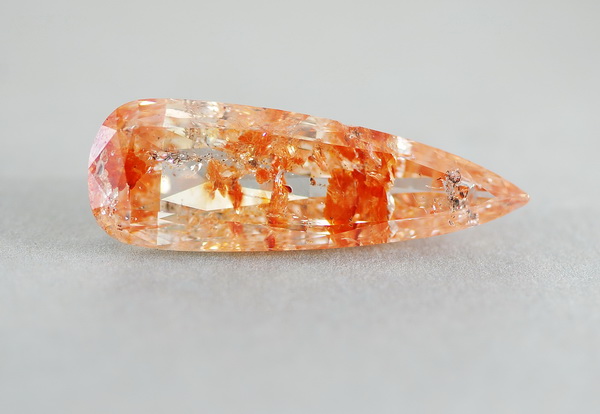Diamond
Diamonds are probably one of the most well known of all gemstones.
The pieces we sell are not high-quality gemstone specimens – they are low grades, typically used for industrial purposes like cutting and grinding.
They have a place in mineral collections, though, or as part of Mohs hardness testing kits.
Appearance
Diamonds occur in a range of shapes, colours, and sizes – typically translucent to transparent.
The most well known will be the clear, colourless pieces often found in jewellery – although many people may not have seen a rough Diamond.
Uses and History
The most obvious use for Diamonds is as a gemstone, found in almost – if not every – jewellery store on the planet.
They are also used as abrasives – lower grade smaller stones are ‘sintered’ onto disks, wheels, etc for use as a high end abrasive. They make excellent abrasives for metalwork, stone work, glass cutting, and more.
However, most of the Diamonds used as an abrasive are synthetic – lab-created. Synthetic Diamonds are also used for heat sinks, optical materials, and gemstones.
Around 26000 kilograms of Diamonds are mined annually, with a value of around 9 billion USD – and around 100,000 kilograms are synthesised artificially.
‘Blood Diamonds’ and Human Rights Abuses
Blood Diamonds is the name given to Diamonds which were mined in a war zone or conflict zone and sold to fund insurgencies, violence, and warlords – often mined by slaves or child labour.
There are several countries in Africa which are considered to have produced blood Diamonds, including Angola, the Ivory Coast, the Congo, Zaire, Liberia, and Sierra Leone – as well as many others.
During the 1980s, reports estimated around 20% of the total production was illegal or unethical – this had fallen to around 4% in 1999, and around 1% now.
This led to the creation of the Kimberley Process Certification Scheme, a scheme intended to create a certified system of trusted suppliers, exporters, and importers.
However, there has been significant criticism of the scheme, including Kimberley process countries illegally buying Diamonds from countries not covered by the Kimberley process – and countries that were expelled from the Kimberley process later being allowed to rejoin.
There is no guarantee that older stock from these countries was not then resold. A NGO called ‘Global Witness’ walked out of the Kimberley process in 2011, showing evidence that numerous countries had breached the rules without any consequences.
Locales
Diamonds are found in Angola, Australia, Botswana, Brazil, Canada, China, Congo, Ghana, Guinea, India, Indonesia, Namibia, Russia, Sierra Leone, South Africa, Tanzania, the USA, and Venezuela.
Mineralogy
However, given the value, and the fact that lab grown Diamonds exist, I would recommend all testing be done by a gemologist.
Photos of Rough Diamonds
Photos of Cut Diamonds
Photos of Diamond Jewellery
Lapidaries cutting Diamonds
Industrial and Diamond Tools
Photos of Diamond Mining
Hazards and Warnings
Almost all rocks, minerals (and, frankly, almost all other substances on earth) can produce toxic dust when cutting, which can cause serious respiratory conditions including silicosis.
When cutting or polishing rocks, minerals, shells, etc, all work should be done wet to minimise the dust, and a suitable respirator or extraction system should be used.
Translations
Arabic:
- ألماس
Hindi:
- हीरा
Portuguese:
- Diamante
Bengali:
- হীরা
Indonesian:
- berlian
Punjabi:
- ਹੀਰਾ
English:
Italian:
- Diamante
Russian:
- Алмаз
French:
- Diamant
Japanese:
- ダイヤモンド
Spanish:
- Diamante
German:
- Diamant
Korean:
- 다이아몬드
Thai:
- เพชร
Gujurati:
- હીરા
Mandarin and Traditional Chinese:
- 金刚石
- 鑽石
Urdu:
- ہیرا



























